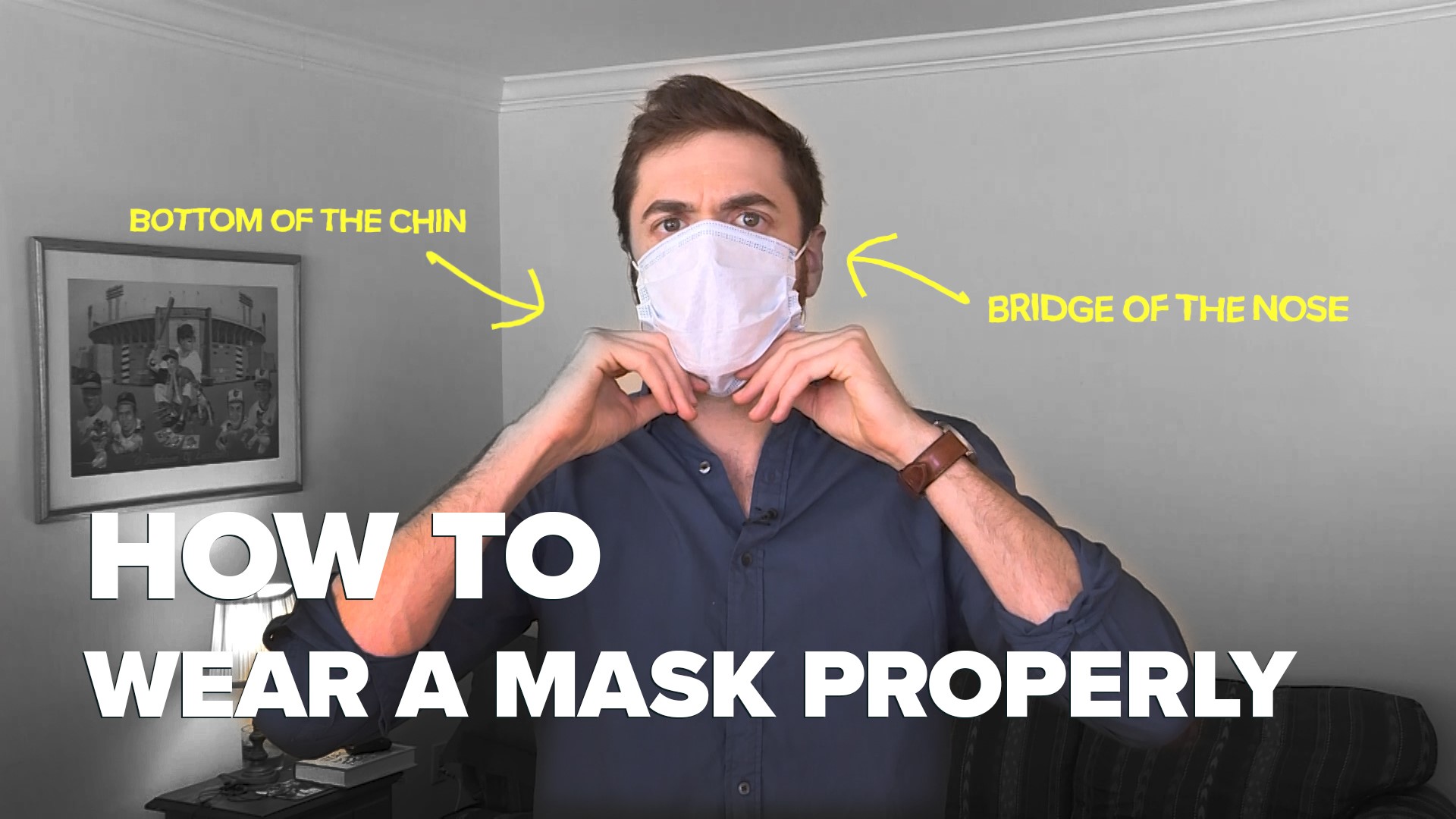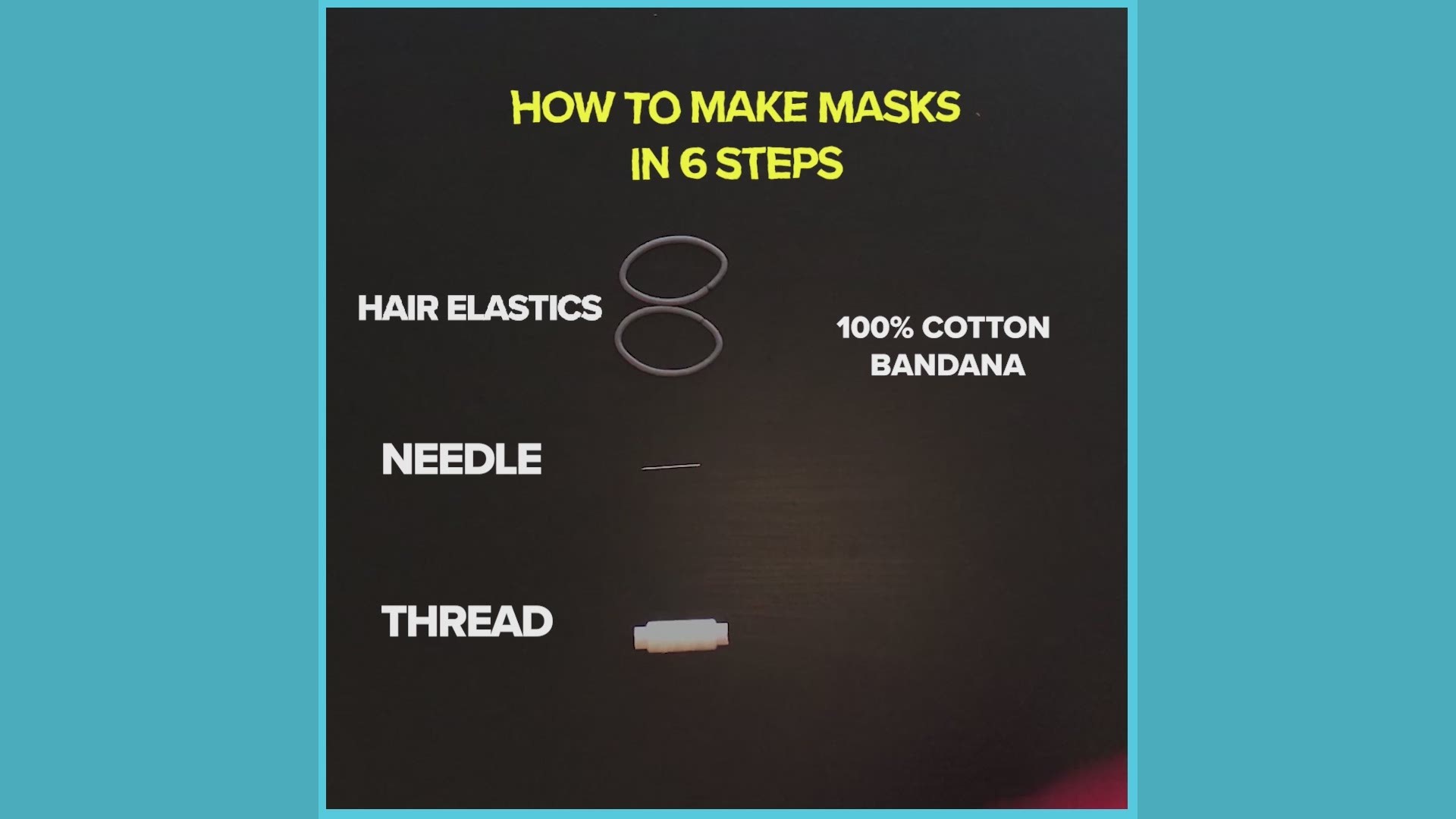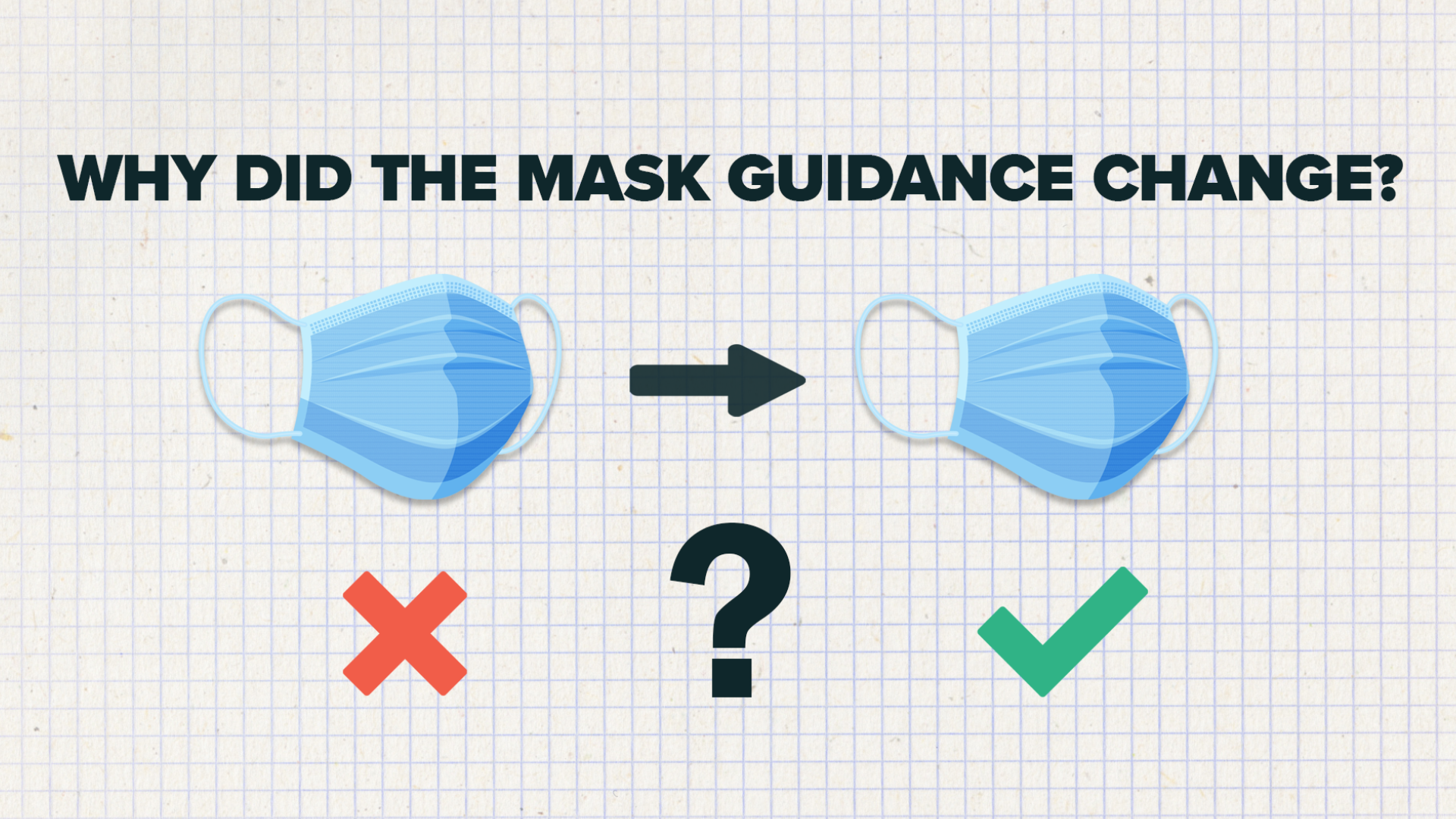WASHINGTON — Masks have become a common sight recently since the Centers for Disease Control and Prevention recommended Americans wear them in public to mitigate the spread of the new coronavirus. However, many people are wearing the masks incorrectly, which can affect how well it protects you and others from viruses.
According to the CDC, face masks should fit snugly against the side of a person's face. The World Health Organization says your entire mouth and nose should be covered, with no gaps between your face and the mask.
Health experts stress that people should not have a false sense of security because they are wearing a mask. The best way to prevent the spread of the new coronavirus, which causes COVID-19, is still to wash your hands frequently and limit time outside. The CDC also does not recommend people wear surgical or N95 masks, which should be reserved for health care and other frontline workers.
Here are some do's and don'ts for wearing a mask.
DO: Wash your hands before putting on your mask
Your face mask will come in close contact with your mouth and nose. Before putting it on, make sure you are using clean hands. Wash hands for at least 20 seconds with soap and water. If you do not have access to soap and water, hand sanitizer can also be used.
DO: Make sure the mask fits snugly and covers the mouth and nose
Wearing a mask will help prevent you from spreading respiratory droplets into the air. The CDC updated their recommendations for mask usage because studies found people with coronavirus can transmit the disease to other before showing symptoms, or even if they never show symptoms at all. Masks made with multiple layers of fabric will also help filter droplets before they get to your face, although cloth masks are not as effective as N95 respirators.
In order for the mask to be the most effective, it must be as snug to the face as possible and cover your mouth and nose up to the nose bridge.
DON'T: Wear your mask only on the tip of your nose, or leave your nose exposed.
The new coronavirus is spread via respiratory droplets, which can enter through the nose and mouth. To make sure the nose is properly protected, the mask should cover your face up to the nose bridge. It may be a little bit stuffy with so much of your nose covered, but wearing the mask below the nose makes it less effective.
DON'T: Leave your chin exposed
Just as a mask should cover the nose up to the nose bridge, a face mask should also cover your face all the way below the chin. If a mask leaves your chin exposed, consider buying or making a larger one.
DON'T: Leave loose gaps on the sides of the mask
A loose mask with gaps on the face is less effective at preventing the wearer from spreading respiratory droplets. It also makes the mask less effective at blocking the droplets. Use the ear loops to tighten the mask as much as possible to ensure a snug fit.
DON'T: Touch the mask or your face while using it
It can be easy to get the urge to touch your face or fidget with a face mask once it is worn. However, you should avoiding touching your face to prevent possible spread of the virus to your mouth, eyes or nose. Once worn outside, the outside of the mask is no longer sterile and one should avoid touching it.
DO: Use the ear loops to remove the mask
Once you return home and are ready to take off your mask, use the ear loops to remove the mask without touching it. Dispose of it in a closed bin and wash your hands immediately. Try not to touch the front of the mask, which may carry germs.
DON'T: Pull the mask down under your chin or off to the side while in use
You should not remove the mask until you have returned home and are ready to dispose of it or wash it. When in public, do not take off the mask and put it back on, pull it down towards your chin or remove one ear loop to keep it to the side. While wearing a mask may get stuffy, removing it prematurely can expose you.
DON'T: Re-use single use masks
Single use masks, such as ones made with paper towels should not be used more than once. Dispose of the mask after one use and use a new, sterile mask next time you need to.
DO: Wash your cloth masks
The CDC recommends washing cloth masks "routinely, depending on frequency of use." It does not provide further information on how often you should wash a mask, but the organization says a washing machine is sufficient to clean a cloth mask.
DO: Only wear your mask when absolutely necessary
Wearing a homemade mask will not automatically protect you from catching the new coronavirus or any other airborne viruses. You will not be able to create a seal against your face with a homemade mask the way that an N95 mask does, so particles may be able to enter through those gaps in the mask.
Fabric masks will also not block the same amount of small particles as a medical-grade mask. Even the N95 mask, one of the most effective facial masks out there, only blocks 95% of small particles, according to the Centers for Disease Control and Prevention.
DON'T: Have a false sense of security
Wearing a mask may make you feel more protected than you actually are. It's important to remember wearing a mask won't automatically mean you will not catch the virus. The most effective way of protecting yourself from COVID-19 is still staying home, washing your hands and practicing effective social distancing.



